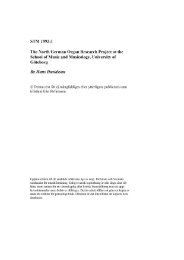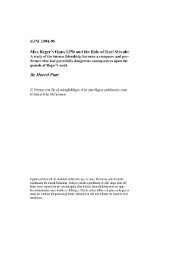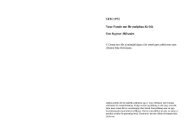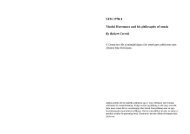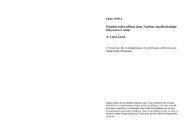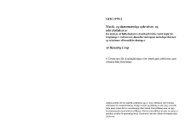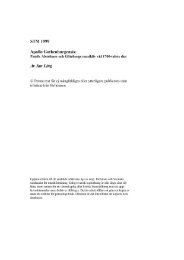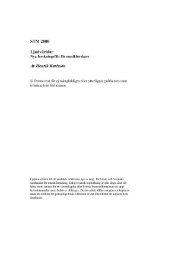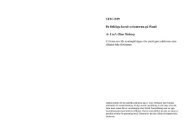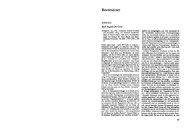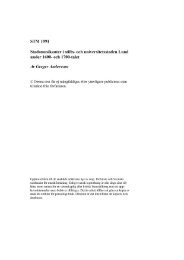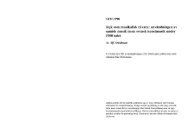Margareta Jersild - Svenska samfundet för musikforskning
Margareta Jersild - Svenska samfundet för musikforskning
Margareta Jersild - Svenska samfundet för musikforskning
Create successful ePaper yourself
Turn your PDF publications into a flip-book with our unique Google optimized e-Paper software.
listed on page 59). Nowadays instrumental pieces with this “introductory model” and special<br />
which only survive today as instrumental pieces. In Dalarna especially, earlier vocal melodies<br />
have been incorporated in the instrumental repertoire and given something of a local twist by<br />
means of ornaments of different kinds. In the coastal areas on the other hand, instrumen-<br />
talists have adopted contemporary, instrumentally conceived tunes.<br />
Folk music research has shown an excessive tendency, even in purley musical analyses,<br />
to divide its material up into song melodies and instrumental tunes. Unquestionably there<br />
are more interesting results to be gained by considering the entire corpus of material, regard-<br />
less of whether it was performed vocally or instrumentally at the time when it was noted<br />
down or recorded. Various quaver polskas belonging to the above stylistic category also<br />
constitute sources for research into folk song, because these melodies live on as instru-<br />
mental pieces when the original words to them are no longer being sung. Finally, examples<br />
3 a-d illustrate a number of variants of a type of melody whose origin is still uncertain. The<br />
melody is known in Sweden from the 1780s. The oldest traditional version was collected<br />
at the beginning of the 19th century (3 a). Later during the 19th and 20th centuries vocally<br />
as well as instrumentally performed versions were noted down (3 b-d are variants played<br />
on the violin during the present century).



